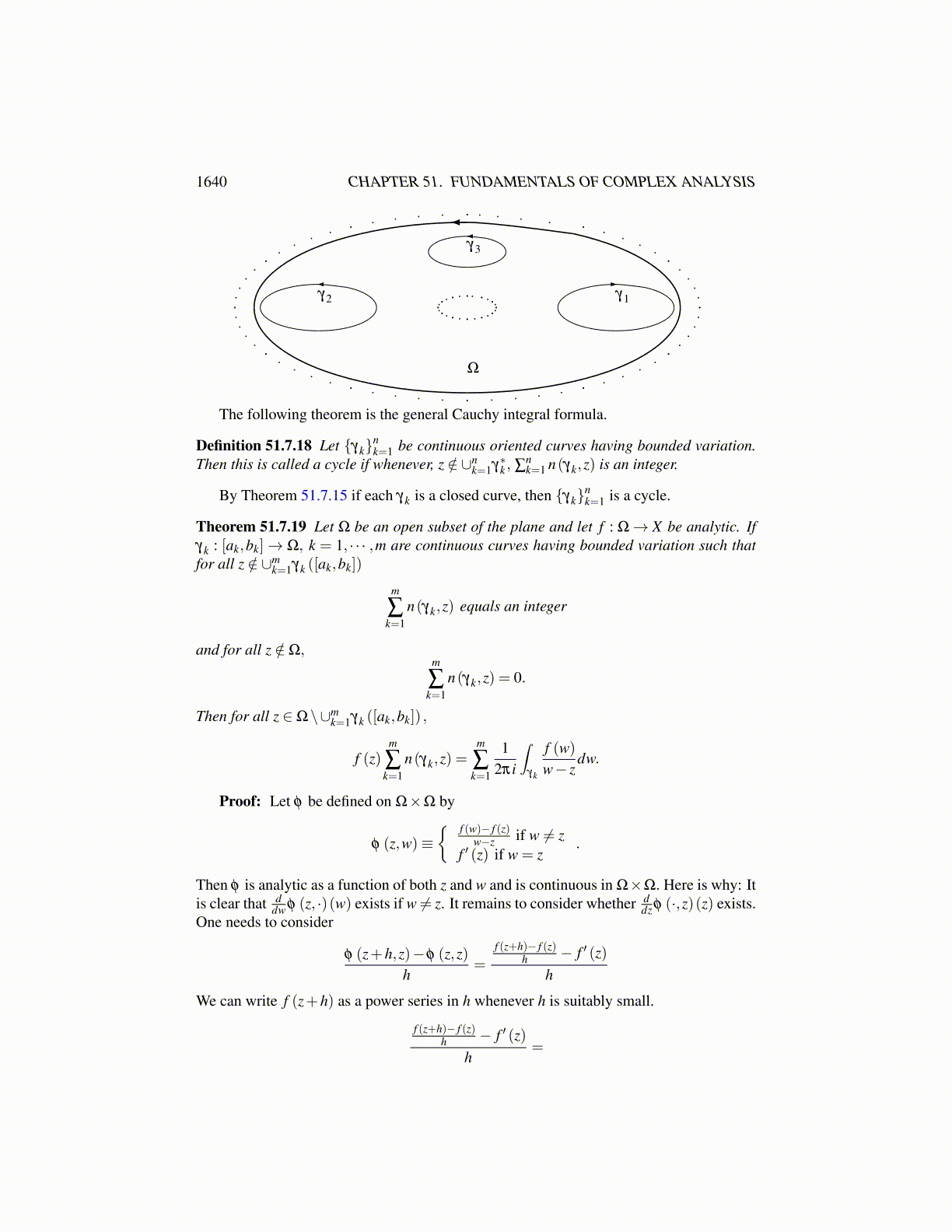
1640 CHAPTER 51. FUNDAMENTALS OF COMPLEX ANALYSIS
and so e−g(b) = 1. This happens if and only if−g(b) = 2mπi for some integer m. Therefore,51.7.24 implies
2mπi =∫ b
a
η ′ (s)dsη (s)− z
=∫
η
dww− z
.
Therefore, 12πi∫
ηkdw
w−z is a sequence of integers converging to 12πi∫
γdw
w−z ≡ n(γ,z) and son(γ,z) must also be an integer and n(ηk,z) = n(γ,z) for all k large enough.
Since n(γ, ·) is continuous and integer valued, it follows from Corollary 7.13.11 onPage 172 that it must be constant on every connected component of C\γ∗. It is clear thatn(γ,z) equals zero on the unbounded component because from the formula,
limz→∞|n(γ,z)| ≤ lim
z→∞V (γ, [a,b])
(1|z|− c
)where c≥max{|w| : w ∈ γ∗} .This proves the theorem.
Corollary 51.7.16 Suppose γ : [a,b]→ C is a continuous bounded variation curve andn(γ,z) is an integer where z /∈ γ∗. Then γ (a) = γ (b) . Also z→ n(γ,z) for z /∈ γ∗ is contin-uous.
Proof: Letting η be a C1 curve for which η (a) = γ (a) and η (b) = γ (b) and which isclose enough to γ that n(η ,z) = n(γ,z) , the argument is similar to the above. Let
g(t)≡∫ t
a
η ′ (s)dsη (s)− z
. (51.7.25)
Then (e−g(t) (η (t)− z)
)′= e−g(t)
η′ (t)− e−g(t)g′ (t)(η (t)− z)
= e−g(t)η′ (t)− e−g(t)
η′ (t) = 0.
Hencee−g(t) (η (t)− z) = c ̸= 0. (51.7.26)
By assumption
g(b) =∫
η
1w− z
dw = 2πim
for some integer, m. Therefore, from 51.7.26
1 = e2πmi =η (b)− z
c.
Thus c = η (b)− z and letting t = a in 51.7.26,
1 =η (a)− zη (b)− z
which shows η (a) = η (b) . This proves the corollary since the assertion about continuitywas already observed.